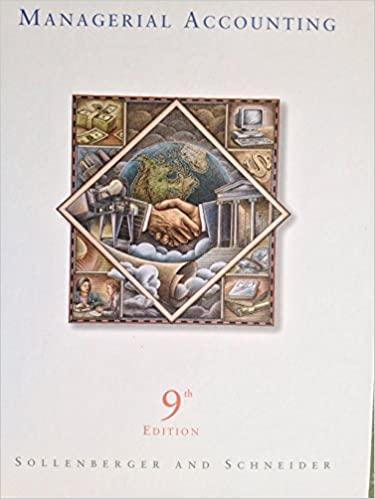Ethics, Hiding a Problem. Avesian, Inc. produces complex printed circuits for stereo amplifiers. The circuits are sold
Question:
Ethics, Hiding a Problem. Avesian, Inc. produces complex printed circuits for stereo amplifiers. The circuits are sold primarily to major component manufacturers.
A common product defect that occurs in production is a "drift" that is caused by failure to maintain precise heat levels. Rejects from the 100 percent testing program can be reworked to acceptable levels if the defect is drift. However, a recent analysis of customer complaints shows that normal rework does not bring the circuits up to standard. Sampling shows that about one-half of the reworked circuits will fail after extended, high-volume amplifier operation-about 10 percent per year over the following five years. Unfortunately, which circuits will fail cannot be determined by testing. The rework process could be changed to correct the problem, but cost-benefit analysis of the change indicates that it is too expensive.
Avesian's marketing analyst has indicated that this problem will have a significant impact on the firm's reputation and on customer satisfaction if the problem is not corrected. Consequently, Avesian's board of directors would view this problem as having serious negative implications on the firm's profitability.
George Wilson, cost manager, has included the circuit failure and rework problem in a report prepared for the upcoming board meeting. Following a longstanding practice, he has highlighted the problem as having serious adverse These costs are 11 percent of sales. The firm plans to implement a program called "TQM Victory" to reduce quality costs in total and as a percentage of sales. Sales are expected to expand by 10 percent per year. By 1999, it expects to spend \(\$ 300,000\) on prevention costs by substantially expanding employee training. Improved inspection efforts will add \(\$ 100,000\) to appraisal costs. By 1999 , each failure cost category will be reduced by 10 percent.
By 2001, continued efforts will hold prevention and appraisal costs constant; but external failure costs are expected to drop to 1 percent of sales. Internal failure costs will drop 30 percent from 1999 levels.
By 2003 (the target year of the TQM effort), prevention costs should fall to \(\$ 200,000\); appraisal costs could be cut in half from 1999 levels. Internal failure costs should drop another 40 percent from their 2001 levels. And, external failure costs are targeted to be no higher than 0.3 percent of sales.
\section*{Required:}
1. What are total quality costs targeted to be in year 2003?
2. Can the firm get to a 4 percent of sales target by 2003? Explain.
3. Comment on at least three key assumptions you see from the data provided.
Step by Step Answer:

Managerial Accounting
ISBN: 9780538842822
9th Edition
Authors: Harold M. Sollenberger, Arnold Schneider, Lane K. Anderson





